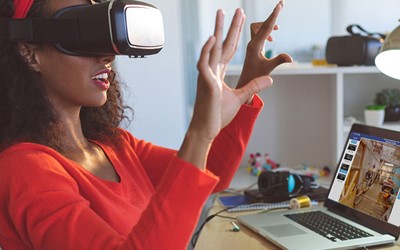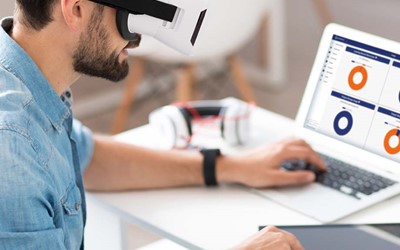Why VR is a good option for vocational jobs and training
Virtual reality is ideal for all types of training as it involves learning by doing! But developing the vision of how 360 VR training can fit into your organization and be impactful, can be a challenge. So we’ve put together some handy examples to help inspire you and showcase why VR is the future of training.
Posted 30 August 2022
Realistic Workplace simulations/360 experience
Many business skills require practice to become good at them. A 360 experience provides the learner with a safe space to practice and learn and is the ideal training method for dangerous or high-stake situations. Before VR, learners would have to imagine high-risk situations, try to visualise all possible outcomes and how they would deal with these. Using 360 VR training removes the need to imagine challenging situations, instead learners will benefit from experiencing a realistic simulation.
VR training can also be used to lower risk in life-threatening situations in medical procedures. For example, surgeons at the Children’s Hospital in Los Angeles used VR simulations to help doctors learn how to treat children in an emergency; in particular, the simulation helps doctors learning how to save an infant who has suffered a seizure/anaphylactic shock. VR not only reproduces scenarios, it can capture them in a controlled training experience, where performance can be measured and adjustments made.
Improving business and soft skills
VR is typically used for helping a learner complete a very specific task, for example learning how to operate machinery in a safe way. But we are actually seeing an increase in businesses using it for soft skills training.
Things like public speaking, sales and negotiation are not often taught at school, but these are important enterprise skills that help keep businesses running and are often expected within a role. Using a 360 immersive experience can help a learner develop workplace skills that require critical thinking and navigate complex emotional tasks such as delivering a presentation to a new client, or giving difficult feedback. A learner could pop on a headset or use desktop 360 VR and be transported into a fully immersive and realistic scenario to practice.
We are also seeing a rise in VR training to help tackle tough subjects such as diversity, inclusion and harassment. Walmart uses Immersive Learning, placing their managers and employees into realistic situations which includes interactive face-to-face conversations so they can learn how to talk to other team members about why certain aspects of their behaviour may not represent Walmart’s values and how they can address this in the future.
Recruiting and on boarding
You may not have thought about using VR for the recruiting and the on-boarding process, but it’s actually a great tool for this. From a recruitment point of view, using an interview simulation can help managers and HR professionals practice asking questions to potential candidates, learn what skills to look for and prepare for the typical questions that they themselves may be asked. This will give them more confidence in their ability to handle the process and choose the right person for the job.
VR simulation is also a useful tool for on boarding new employees, making the process not only more enjoyable but also more efficient. Employees can be given a tour of their new office, view different locations, meet their team, and take part in any training that may be needed before they start.
These are just a few examples on how VR training can help your workforce improve their skills and put you ahead of the competition. It is a viable and cost effect way to train employees quickly and efficiently.
30-day FREE Trial of eNetReality
Start your VR experience today and begin to quickly develop and create your own fully-immersive assessments - no coding required!
Recent Posts
Turning AI into potential gainSeamless HR Integration: Streamlining workforce enrolment with eCom's eNet Product Suite
eCom Learning Solutions: Staying ahead in a constantly evolving landscape
Is your work changing, or just your tools? A question for the modern workforce
What is competency? And why it matters in the workplace



